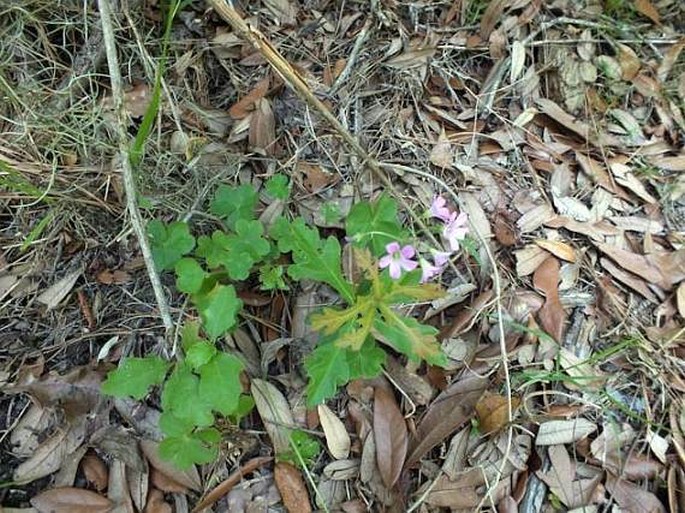Syn.: Acetosella violacea (L.) Kuntze, Ionoxalis violacea (L.) Small, Ionoxalis violacea var. trichophora (Fassett) Moldenke, Oxalis violacea f. albida Fassett, Oxalis violacea var. trichophora Fassett, Sassia violacea (L.) Holub
Family: Oxalidaceae R. Br.

Distribution: North American species found in eastern part of US, with western limit from Dakotas to Texas and along the Atlantic coast from Massachusetts to Louisiana with spotty occurrence in Florida. Naturalized in southwestern Australia.
Ecology: Grows in mesic habitats, from prairies to open lowland and upland forests and abandoned fields, elevations from sea level to 1000 m. Blooms in mid-spring to early summer, occasionally into fall.

Description: Perennial herb up to 20 cm tall, from underground, rose-coloured bulbs, fibrous roots. Leaves emerge directly from the bulb on about 10 cm long petioles, glabrous, leaves are trifoliate, about 2.5 cm across, opening during the day, each consisting of three obcordate leaflets, smooth margins, with prominent veins, one through the middle and two on each lobe, greyish green. Inflorescence is a loose umbel of 2–6 flowers with 2.5 cm pedicels; the umbel borne on a tall peduncle, 10–14 cm tall, slightly hairy, rising above the leaves; flowers campanulate, 8–10 mm across, pentamerous, sepals shorter than petals, lanceolate, smooth, green with purplish tips, petals lavender to pale purple with darker purple lines longitudinally at the throat, oblanceolate, slightly recurved tips; stamens inserted with yellow anthers; style longer than stamens. Fruit is a 5 section capsule, splitting and ejecting light brown seeds.
Threat and protection: The Violet Wood-sorrel is listed as endangered in Connecticut, Massachusetts, Michigan, New York and Rhode Island.
Note: Bulb’s fibrous roots grow bulblets which will grow into adult bulbs, multiplying into clone plants.



These images were taken in USA, Louisiana, Fontainebleau State Park (May 2014).


